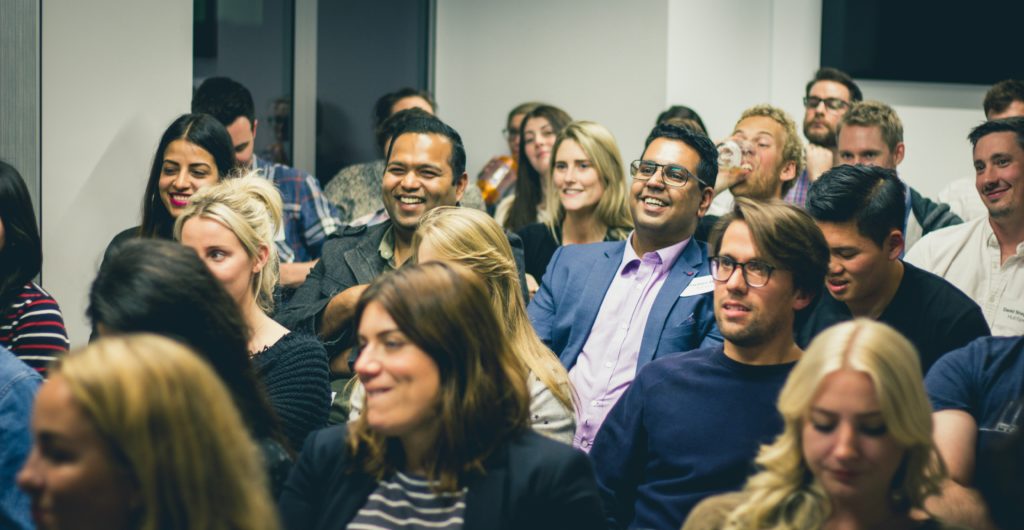6 Examples of Killer Speech
Openings That You Can Use
Think about a speech you saw or heard that stuck with you. What is it about that speech that makes you remember it long after you’ve heard it? The speaker was probably dynamic and engaging or the topic was compelling and of particular interest to you. The speech probably had a killer opening as well.
The introduction to a speech is one of its most crucial aspects. It’s where you grab your audience’s attention and set the tone for the rest of the speech. If your speech opening isn’t memorable, the rest of your speech probably won’t be either.
To help you understand the impact a good opening can have, here’s a list of six killer speech intros. The fact that these speeches are so memorable shows why public speaking is important and why your introduction should be strong.
Julian Treasure: Start with a question
“The human voice: It’s the instrument we all play. It’s the most powerful sound in the world, probably. It’s the only one that can start a war or say ‘I love you.’ And yet many people have the experience that when they speak, people don’t listen to them. And why is that? How can we speak powerfully to make change in the world?”
Julian Treasure’s speech “How to speak so that people want to listen” showcases a tried and true speech opening technique: asking a question. You shouldn’t ask just any question, though. It should be a compelling, thought-provoking question that doesn’t have a straightforward answer.
Asking the audience what they had for lunch that day isn’t compelling, unless you have an interesting reason for asking it that you follow up with. Treasure’s compelling question doesn’t require an immediate answer but instead asks you to think.
Ric Elias: Incredible story
“Imagine a big explosion as you climb through 3,000 ft. Imagine a plane full of smoke. Imagine an engine going clack, clack, clack, clack, clack, clack, clack. It sounds scary. Well, I had a unique seat that day. I was sitting in 1D.”
One way to grab the attention of your audience right away is to tell an exciting or unbelievable story. Ric Elias’s speech about surviving a plane crash goes straight into the action, asking the listener to imagine unbelievable situation he was in. With an opening like that, who wouldn’t want to keep listening to find out what happens next?
To make your intro story more effective, don’t finish it right away. Come back to it later in the speech so that your audience is held in anticipation.
Dan Pink: Make a “confession”
“I need to make a confession at the outset here. A little over 20 years ago, I did something that I regret, something that I’m not particularly proud of.”
Dan Pink’s speech grabs your attention right away because he makes a confession. He’s letting you in on a secret about himself or something he did and you want to listen because you want to hear it.
Letting your audience know a secret or confessing information about yourself makes them feel exclusive, like they have access to something that others don’t. Exclusivity always piques interest.

Jane McGonigal: Provocative statement
“I’m a gamer, so I like to have goals. I like special missions and secret objectives. So here’s my special mission for this talk: I’m going to try to increase the life span of every single person in this room by seven and a half minutes. Literally, you will live seven and a half minutes longer than you would have otherwise, just because you watched this talk.”
Starting a speech with a provocative statement is similar to starting with a question. You make the audience think. You surprise them or say something unexpected and they keep listening to hear an explanation.
Jane McGonigal uses this tactic in her speech, claiming she will expand the life span of every audience member by seven and half minutes. It’s intriguing, provocative, and makes you wonder instantly how she’s going to do it.
Pamela Meyer: Set up a problem (then solve it)
“Okay, now I don’t want to alarm anybody in this room, but it’s just come to my attention that the person to your right is a liar. Also, the person to your left is a liar. Also, the person sitting in your very seats is a liar. We’re all liars.”
People love hearing about a big problem and then knowing the solution — it’s a common framework from literature that you can borrow for your speech. By telling her entire audience that they are liars, Pamela Meyer sets up a problem that seems difficult to solve: how to know who is a liar. She unravels the solution in the rest of her speech, explaining how to become a liespotter.
Sir Ken Robinson: Humor
“Good morning. How are you?” (Audience replies “Good”) “It’s been great, hasn’t it? I’ve been blown away by the whole thing. In fact, I’m leaving.”
Humor can be an impactful way to start a speech, but it’s also risky. Your joke might fall flat and leave everyone feeling uncomfortable. Kick off your speech with a joke, however, it can go over well.
Sir Ken Robinson’s speech, “Do schools kill creativity?” is one of the most watched TED Talks of all time and for good reason. His speech is engaging and dynamic, centering on a topic that almost everyone can easily relate to. What could’ve been a boring start — “Good morning. How are you?” — becomes a funny and memorable speech opening thanks to Robinson’s timing and deadpan delivery.
Make your speech opening memorable
If you want to deliver an engaging address that your audience members will speak about years later and how others perceive the sound of your voice, be sure to craft an unforgettable opening. By using any of the above techniques, you’re likely to have a more solid start to your speech. Who knows? Maybe your speech opening will be so good it’ll end up on a list just like this one.




